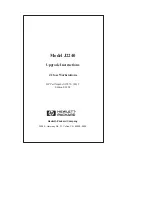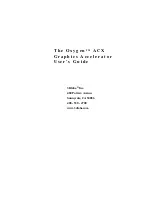
2. Power supply
The Network Interface Card shall be capable to operate from 3.3V +/- 0.2V Host supply voltage. Refer to
chapter 11.1. Host interface
for configuration of card type and supply voltage. The current consumption
averaged over 1s is defined for the following operational modes:
Doze mode: 30mA
Receive mode: 230mA
Transmit mode: 330mA
A 120mV peak-peak ripple on the supply voltage with a fundamental frequency not greater than 150kHz and
not less than 60Hz shall not degrade the Network Interface performance.
The total load capacitance of the supply voltage shall not exceed 150µF in order to meet the inrush current
requirement.
3. PERFORMANCE REQUIREMENTS
3.1. General
Receiver input levels and transmitter output levels are specified at the antenna connector.
3.1.1. Antenna port impedance
The nominal antenna port impedance is 5
0
W.
The Network Interface Card shall not be damaged for any Voltage Standing Wave Ratio (VSWR)
1≤
VSWR
≤∞
.
3.1.2. Power-on start-up time
The Network Interface Card shall be operational within 600ms after switching the power supply on. This
includes a delay of max 500 ms for the Flash ROM power up sequence.
3.1.3. Doze to receive mode start-up time
The Network Interface Card shall be operational within 0.75ms after switching from Doze mode to Receive
mode. This includes lock-in and stabilization of the synthesizers. Transmissions are not allowed during this
period.
3.1.4. Receive to transmit turnaround time
The time from transition of the TXE control line (transmit enable control line from WMAC to DSP) from inactive
state to active state until the RF section is in transmit mode shall be not more than 5µs. The NIC is said to be in
transmit mode at the moment the RF output power level is within 90% of its final value.
Содержание MPCI-101
Страница 1: ...MPCI 101 WIRELESS LAN CARD...




























